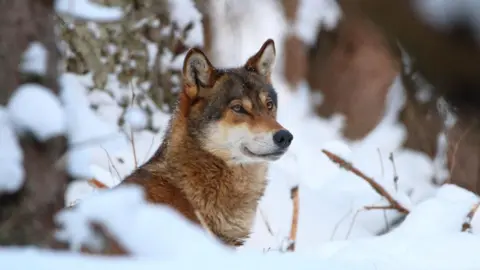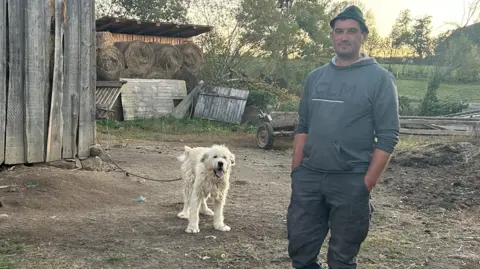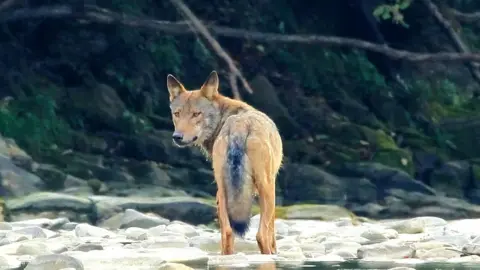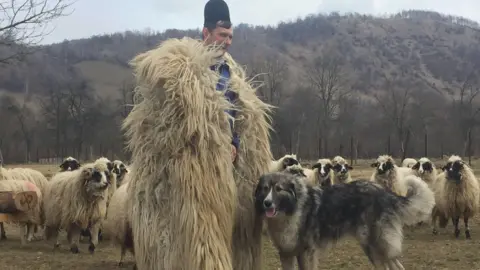Wolves in EU could lose safeguards, allowing culls as numbers soar
 Karol Kalisky, Arolla Film, Slovakia
Karol Kalisky, Arolla Film, SlovakiaThe first snow of winter has fallen in Sansimion, a village in Romania’s eastern Carpathian mountains.
Shepherd József Rácz and his sons keep 500 ewes up on the high pasture here. It’s a hard life: when he’s not worrying about milking his sheep, which he does three times a day, he’s worrying about protecting them from predators.
Each year, József loses five or six of his herd to a wolf, or a bear. It’s why he keeps 17 dogs.
“A good dog is the best tool a shepherd has, to protect his flock at night, and in the daytime too,” the farmer says.
This week, 45 years of strict protection for grey wolves in Europe could come to an end.
A European Commission proposal wants to move wolves from Annex II (strictly protected) to Annex III (protected) of the Bern Convention.
This would remove many of the safeguards which have allowed the animals to flourish in Europe – if wolves lose their current status, each EU country would be able to set an annual quota of wolves to kill.

The Commission argues that the number of wolves in the EU has almost doubled, from 11,000 in 2012 to over 20,000 today, and that they’re causing too much damage to livestock.
But wildlife campaigners say improved protection methods, including trained sheep dogs, would be a better solution than removing safeguards. They say that wolves keep down numbers of deer and wild boar, which damage trees and crops. Wolves also prevent the spread of diseases by eating sick animals.
In the town of Baile Tusnad, in a valley near József’s village, wildlife experts met recently to discuss large carnivores. Most, though not all, oppose the hunting of wolves and bears.
“African swine fever is spreading all over Europe,” said Michal Haring, a biologist from Slovakia, “and the wolf is a very good ‘doctor’ for this, suppressing the disease. Wolves cannot catch it.”
Another argument against shooting wolves is that they hunt in packs of five to eight, usually a pair and their offspring. If the older wolves are shot, the pack fragments, making it harder for them to catch deer and wild boar.
“Individual wolves are more likely to attack sheep and other domesticated animals,” Mr Haring explains.
 Jozef Fiala, Arolla Film, Slovakia
Jozef Fiala, Arolla Film, SlovakiaCampaigners also point to a 2023 EU report, which states that only around 50,000 of Europe’s 68 million sheep and goats are killed by wolves each year – 0.065% of the total number – adding that the overall impact of wolves on EU livestock is “very small”.
Moreover, it says there have been no fatal wolf attacks on humans for 40 years.
“If we expect countries like India or Indonesia to protect their tigers,” says Laurent Schley, head of the Wildlife department in the Luxembourg government, “and Africans to protect lions and elephants, then we as relatively rich Europeans should be willing to tolerate some wolves.” Luxembourg is one of the few western European countries where no wolves have been sighted yet, Mr Schley believes it’s only a matter of time.
“We have very high densities of deer and wild boar, so the conditions for the wolf are there.
“Of course, if individual wolves or packs start killing too much livestock, or were to show aggression towards humans, we would have to draw the line. Human safety always comes first.”

But back on the mountainside, József says wolves are dangerous because “they’re clever animals”. He favours tougher legal measures to cull the predators.
Bears approach through the forest, treading on branches and alerting his dogs, József says: if they break into the wickerwork enclosure where his herd stay at night, they will only grab one animal.
If a pack of wolves get in though, they can kill dozens of sheep at a time.
Last year, József’s favourite dog, Moody, was killed by wolves, in broad daylight, as they moved from one pasture to the next. All they found was his bloodied pelt.
The more wolves there are, József says, the more likely they will take his sheep.
And it takes a long time to train a good dog.







